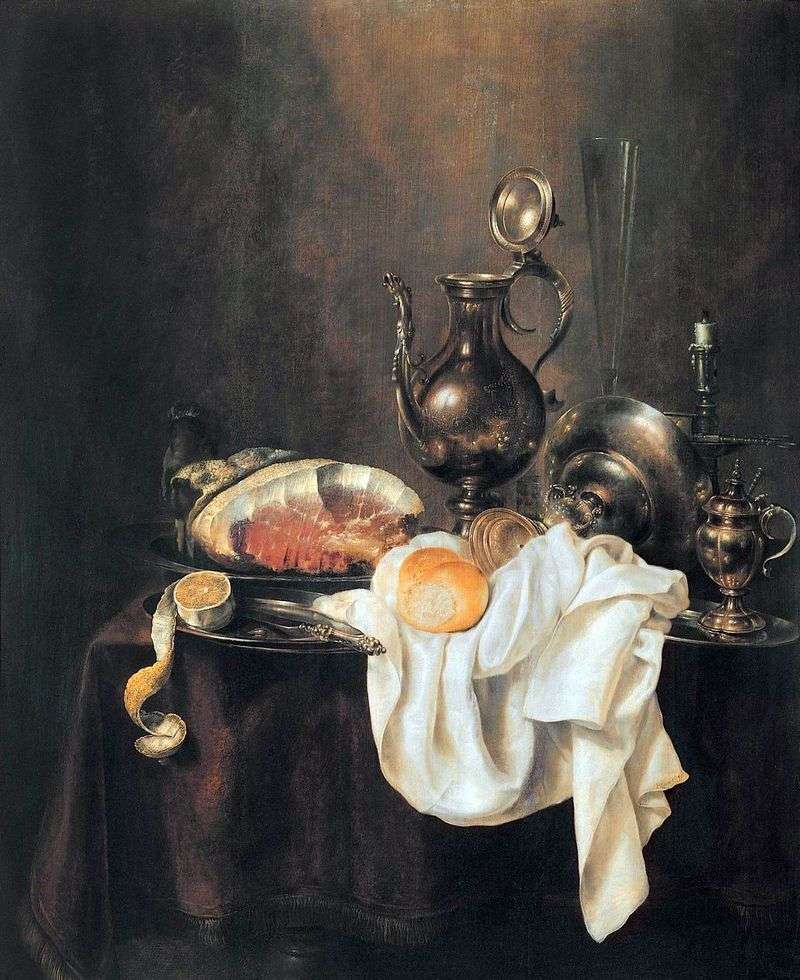
The items depicted in the picture are constantly in various combinations appearing in the paintings of Willem Klas Heda. According to Vrom’s monograph, you can find other analogies: the still life of 1642 in a private collection, Laren; 1643 in the meeting Fink, Brussels; 1650 in the Museum of Frans Hals, Harlem and others.
Apart from the format, Willem Heads are most often horizontal, the still-lifes named in many respects have a similarity to the picture. Nevertheless, the monotony of the performance, the almost complete absence of a fine pasty smear that creates the texture of objects, made VR Vipper doubt the authorship of Willem Head and assume the hand of his son Gerrit, about the dates and circumstances of his life whose data is almost not preserved. Among the works signed by Gerrit or those long ago attributed to him, one can also find very close parallels.
Since the signature without initials is characteristic of both masters, and they both placed it on the edge of a napkin, like embroidery, the very inscription of the signature in the picture does not give proof of the authorship of the father or son.
To reconsider this issue, I forced the analysis of Still Life from the National Gallery of Art, Washington. The painting, in many respects similar, also signed and dated 1650, is defined as the work of Gerrit, on the basis of careful analysis of its compositional and pictorial features. The predominance of vertical formats in Gerrit, the characteristic crowdedness of the composition, the more monotonous reproduction of the texture, the greater smoothness of the smear falling in shape, the minimization of the favorite reception-placers of light point accents-all these qualities characterize the picture from Washington, as well as this work.
The picture, apparently, in accordance with the intentions of the author, caused associations with a certain circle of reflections, characteristic of works of the genre “vanitas”. The objects themselves and their arrangement shows the allegorical meaning of the work, where material goods symbolize silverware.
Joy and taste are laid in a piece of ham. The internal bitterness, hidden under a beautiful “shell” shows a lemon. Density and short life, like in many other works, symbolizes a candle.
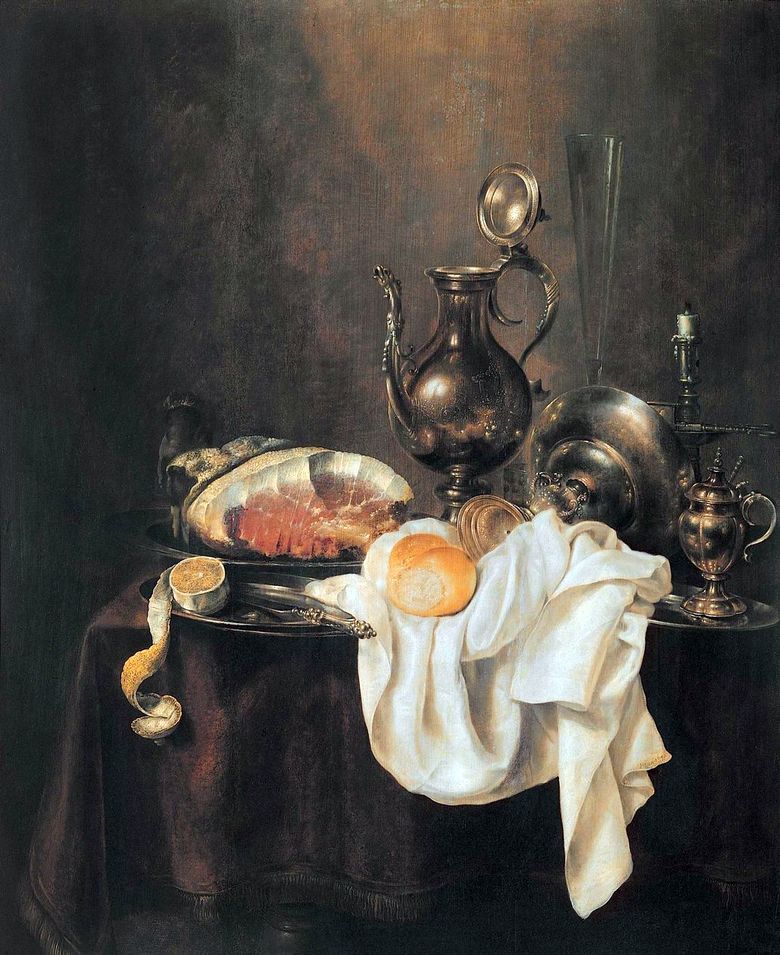 Jambon et argenterie – Kheda Gerrit Willems
Jambon et argenterie – Kheda Gerrit Willems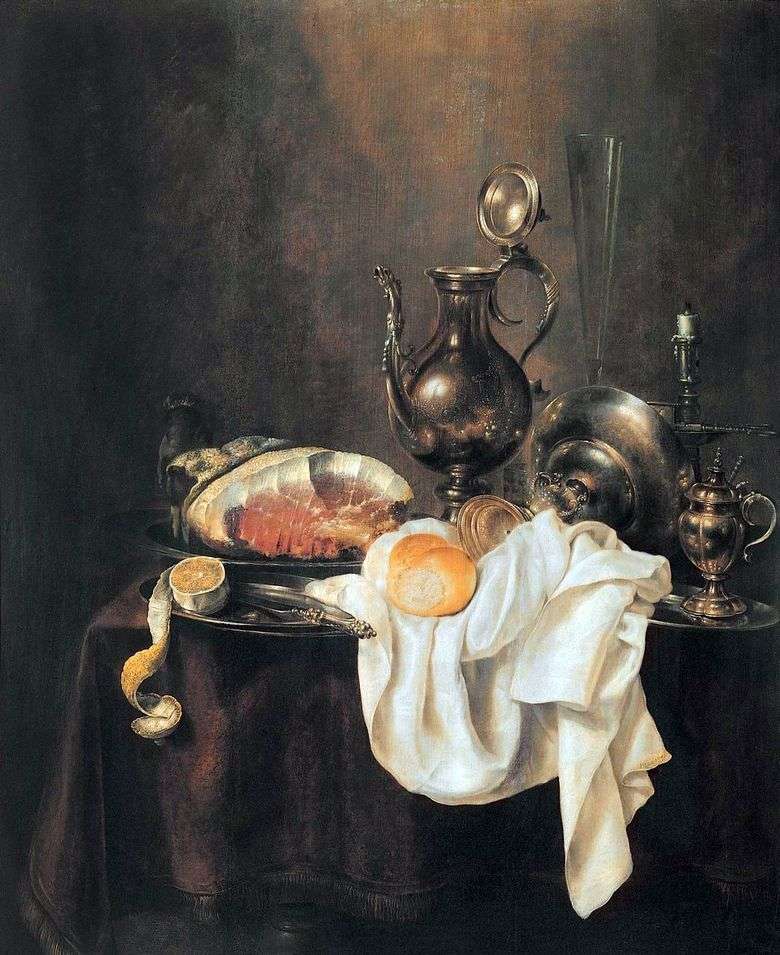 Jamón y cubiertos – Kheda Gerrit Willems
Jamón y cubiertos – Kheda Gerrit Willems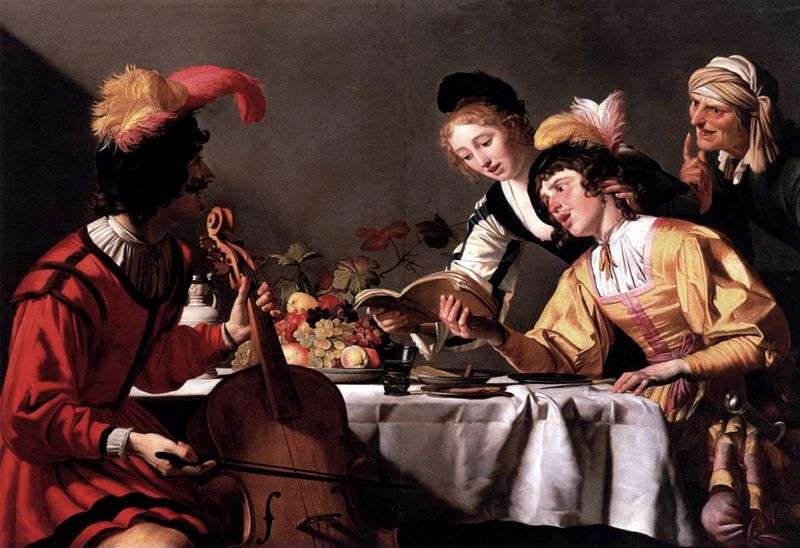 Concert by Gerrit van Honthorst
Concert by Gerrit van Honthorst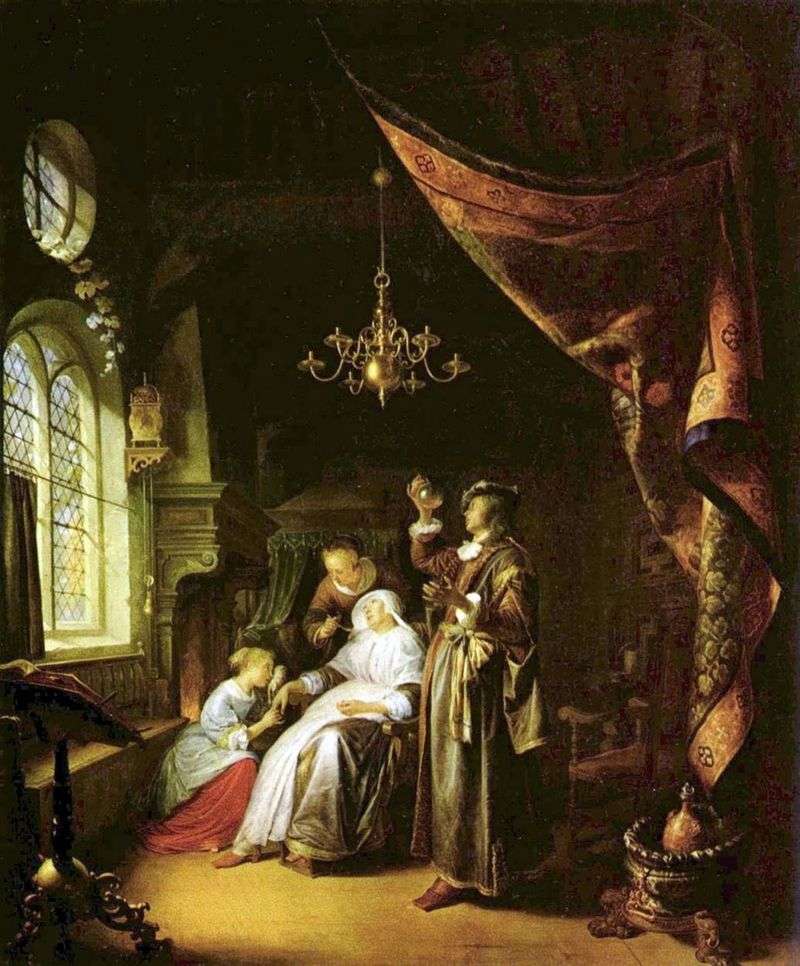 Patient and doctor by Gerard (Gerrit) Dow
Patient and doctor by Gerard (Gerrit) Dow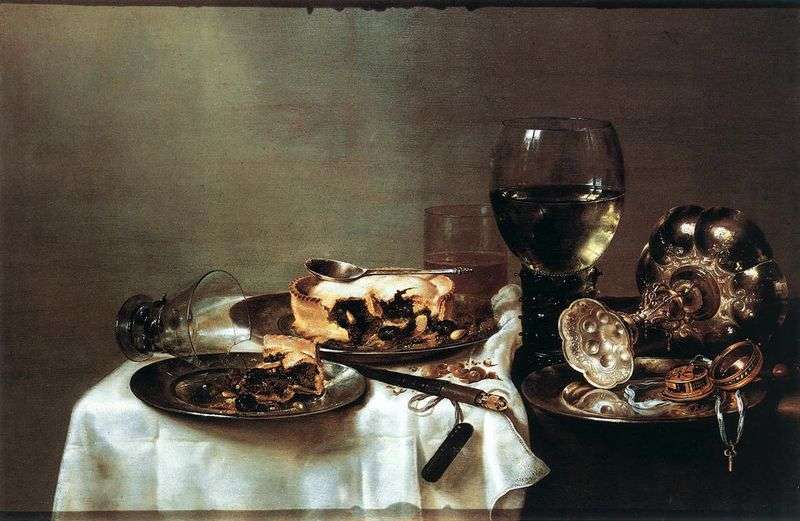 Breakfast with blueberry pie by Willem Klas Heda
Breakfast with blueberry pie by Willem Klas Heda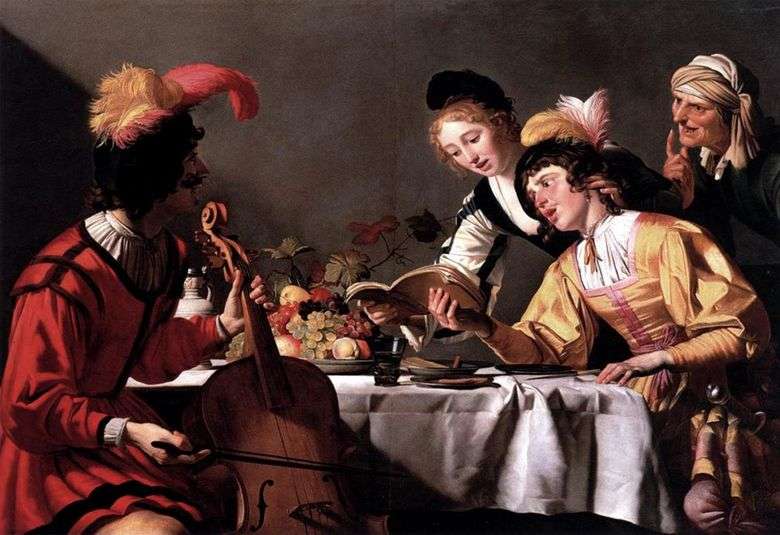 Concierto – Gerrit van Honthorst
Concierto – Gerrit van Honthorst Still Life by Antonio de Pereda y Salgado
Still Life by Antonio de Pereda y Salgado The liberation of St. Petra by Gerrit van Hohnhorst
The liberation of St. Petra by Gerrit van Hohnhorst